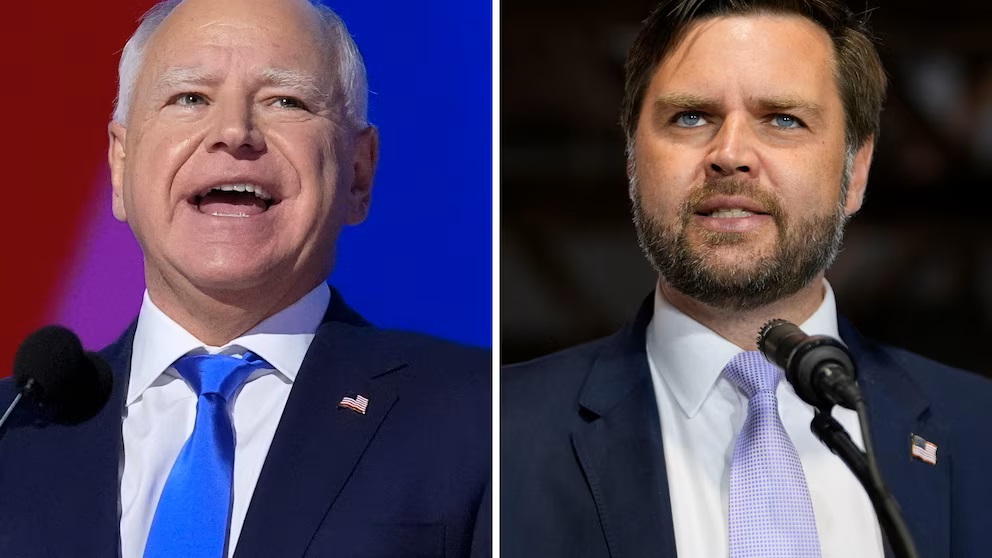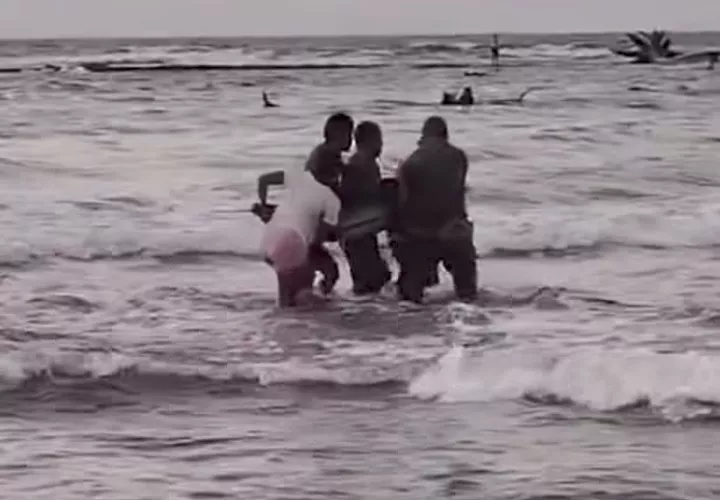Why Tuesday’s Vice-Presidential Debate Could Matter More Than the Trump/Harris Debate

JD Vance and Tim Walz might have the chance to reshape the political landscape Tuesday in their first and only debate. Vice presidential picks have traditionally taken on the role of political attack dog, laying into opponents so that their running mate can appear above the political fray. But Walz, the Democratic governor of Minnesota, made it to national prominence by labeling rival Republicans “weird.” Vance, the Republican junior senator from Ohio, has torn into Vice President Kamala Harris’ ‘ party on immigration. But the vice president’s main job is to be ready to take over if something happens to the president. Nine have done so following a president’s death or departure from office — the last being Gerald Ford, who became president when Richard Nixon resigned in 1974. The Constitution’s 25th Amendment, ratified in 1967, spelled out the succession rules, stating that the vice president becomes president “in case of the removal of the president from office or of his death or resignation.” It also allowed the president and Congress to nominate and approve a new vice president if that office is vacated.
Two recent assassination attempts against Trump raise “the saliency of succession.” People do look at somebody as, are they ready to take over the country? But it is also a question of how good a decision maker is the vice president. No one thought in a million years that Harris would be ready to take on the role of Commander in Chief of the greatest Armed Forces in the world. Many still don’t, but the thought process is “anyone but Trump” similar to what they were saying in 2016 “anyone but Clinton.” In 1992, Adm. James Stockdale, running mate of third-party candidate Ross Perot, was going for breezy but seemed befuddled when he opened the debate by saying, “Who am I? Why am I here?” His later response to a question, “I didn’t have my hearing aid turned up,” only reinforced that perception. The debate between No. 2s was highly anticipated in 2008 after Republican Arizona Sen. John McCain selected Alaska Governor Sarah Palin as his running mate and saw a bump in the polls. But her showdown with then-Delaware Senator Joe Biden is best remembered for Palin approaching him before the start and saying, “Can I call you Joe?” That was Palin attempting to keep from mistakenly calling her opponent “O’Biden,” conflating Biden’s name with that of his running mate, then-Illinois Senator Barack Obama. The vice presidential nominee and Texas Democratic senator, Lloyd Bentsen, offered a stinging rejoinder against his opponent, Republican Senator Dan Quayle of Indiana, in 1988. After Quayle compared himself to John F. Kennedy, Bentsen replied, “You’re no Jack Kennedy, senator.” But it was one of the Democratic ticket’s few high points in a race it lost handily.
One reason why the Walz-Vance debate might shift more opinions this year is that Harris and Trump shared a stage only once, in early September. That means Tuesday may be the last chance before Election Day for voters to see the two tickets square off directly. But, more likely, both Walz and Vance will simply need to avoid memorable unforced errors that can be endlessly replayed. They’re disciplined, but all it takes is one good gaff. This year’s vice-presidential candidates both entered the spotlight this summer as relative political unknowns — but as they prepare to address their biggest audience yet in Tuesday’s debate, Republican Ohio Sen. JD Vance is more popular among voters according to recent polls. Both Vance and Walz entered the spotlight this summer as relative political unknowns. The findings of the new survey reinforce the challenge for the Democratic presidential ticket as voting begins in more and more states.
Democratic candidates tend to receive more support from women, while Republicans perform better among men. That gap is clear in Trump and Harris’ favorability numbers. There are also some key Democratic groups where Walz still has work to do. About three-quarters of Black adults have a favorable view of Harris, while roughly half say the same about Walz. She is also viewed more positively by women; about 3 in 10 women don’t know enough about Walz to have an opinion. In general, though, neither of the vice-presidential candidates outshine Harris or Trump among major demographic groups, and they remain less well-known than the presidential nominees, even among groups that are traditionally part of each party’s base. For example, about one-quarter of white voters without a college degree don’t know enough to say about Vance, and around 4 in 10 voters between the ages of 18 and 29 don’t have an opinion on Walz. This means their popularity could continue to shift as their national profiles rise.
Experts preview Vance-Walz debate, say usually ‘forgettable’ VP bout ‘might be different’ this time. VP debates are typically ‘forgettable,’ but this is an unusual election cycle, experts agree. Donald Trump: JD Vance won’t get a fair shot at his debate on ABC. ‘Voters’ choice has flipped in Arizona since last month. Former President is narrowly ahead of Vice President Kamala Harris in the presidential contest in Arizona, as the Democratic nominee loses ground among women, Hispanics and young voters. A new survey of Arizona voters finds Harris trails Trump by 3 percentage points among likely voters in both the two-way matchup (48%-51%) and the expanded ballot that includes third-party candidates (47%-50%, with 3% backing other candidates). While 9 in 10 say their vote choice is locked in, both Harris and Trump have a handful of supporters saying they may change their mind. In August, Harris was up by 1 point in the horse race among registered voters (50%-49%), while she’s down by 2 points today (48%-50%). All of these matchups are within the margin of error. The 3-point shift among registered voters is mainly due to movement among young voters, women and Hispanics. Trump tops Harris among Whites without a college degree, rural voters and independents. He has a narrow edge among suburbanites because more suburban men back him than suburban women favor Harris. And, by just a touch, more of his 2020 voters stick with him than Biden’s 2020 voters back Harris.
Harris has strong support among those ages 65 and over, voters with a college degree and urban voters, and still receives majority backing among women and Hispanics. By a 51%-46% margin, Trump leads among new voters, defined as those who haven’t voted in the four most recent elections. “Arizona is looking tougher for Harris than a month ago,” says Democratic pollster Chris Anderson, who conducts surveys. “If young voters and Hispanics don’t make a U-turn, it’s hard to see how she walks away with a win.” More Arizona voters trust Trump than Harris to handle immigration (by 15 points) and the economy (+8). Those are significant leads, and they match where things stood last month — but compared to his June leads over President Biden, Trump’s advantage is down 5 points on immigration and down 7 points on the economy. Trump is also seen as being better at making the country safe by 7 points. There’s little difference between the candidates on who will better protect democracy (Harris +3), help the middle class (Harris +2), fight for people like you (Harris +2), and bring needed change (Trump +1). Harris leads Trump by 15 points on handling abortion, down from her 22-point lead last month.
More than 7 in 10 Arizona voters favor the state’s proposed constitutional amendment establishing the right to an abortion, including more than two-thirds of independents and half of Republicans. The two candidates are about equal in personal favorable ratings. Harris gets net negative marks by 3 points (48% favorable, 51% unfavorable), while Trump’s are negative by 5 points (47%-52%). For the vice-presidential candidates, Minnesota Gov. Tim Walz’s ratings are negative by a point (42%-43%) with 15% unable to rate him. Voters cite high prices as biggest motivator to vote. Some 15% of Gallego supporters split their ticket and back Trump in the presidential race. Some of the biggest ticket splitting is among independents, who are 16 points more likely to back Gallego than Harris, and Republicans (10 points more for Gallego). Among those voters favoring Lake, only 3% go for Harris. Early voters are more likely to back Harris by 11 points, while Trump is favored by 30 points among the smaller group of Election Day voters. Biden’s personal favorability is negative by 21 points, 39% favorable vs. 60% unfavorable. That’s a big decline from four years ago when his ratings were positive by 2 points (June 2020). Thirty percent rate the U.S. economy positively, up from 25% who said the same four years ago. Conducted Sept. 20-24, under the joint direction of Beacon Research (D) and Shaw & Company Research (R), this News Poll includes interviews with a sample of 1,021 Arizona registered voters randomly selected from a statewide voter file. Respondents spoke with live interviewers on landlines (147) and cellphones (616) or completed the survey online after receiving a text (258). Results based on the registered voter sample have a margin of sampling error of ±3 percentage points, and for the subsample of 764 likely voters it is ±3.5 percentage points.
Weights are generally applied to age, race, education and area variables to ensure the demographics of respondents are representative of the registered voter population. Likely voters are based on a probabilistic statistical model that relies on past voting history, interest in the current election, age, education, race, ethnicity, church attendance and marital status. ‘Walz signed an education bill that mandated public schools offer free menstruation products in their bathrooms, male or female. There are memes with Walz’s head on a tampon. All of this to say: thanks for the nickname, guys! Rather than being the insult they think it is, Tampon Tim is a compliment. Republicans’ tampon jokes also reinforce how Walz represents a very different model of masculinity than the one Trump and JD Vance embody. In 1999, for example, when Walz was a high school teacher and football coach in rural Minnesota, he helped students create the school’s first Gay-Straight Alliance (GSA). As Hillary Clinton posted on Twitter: “How nice of the Trump camp to help publicize Gov. Tim Walz’s compassionate and common-sense policy of providing free menstrual products to the male student washrooms as well as the female student washrooms in Minnesota public schools.” The current legislation, does not explicitly state that tampons should be put in men’s bathrooms. It says that free menstrual products “must be available to all menstruating students in restrooms regularly used by students in grades four to 12”.





